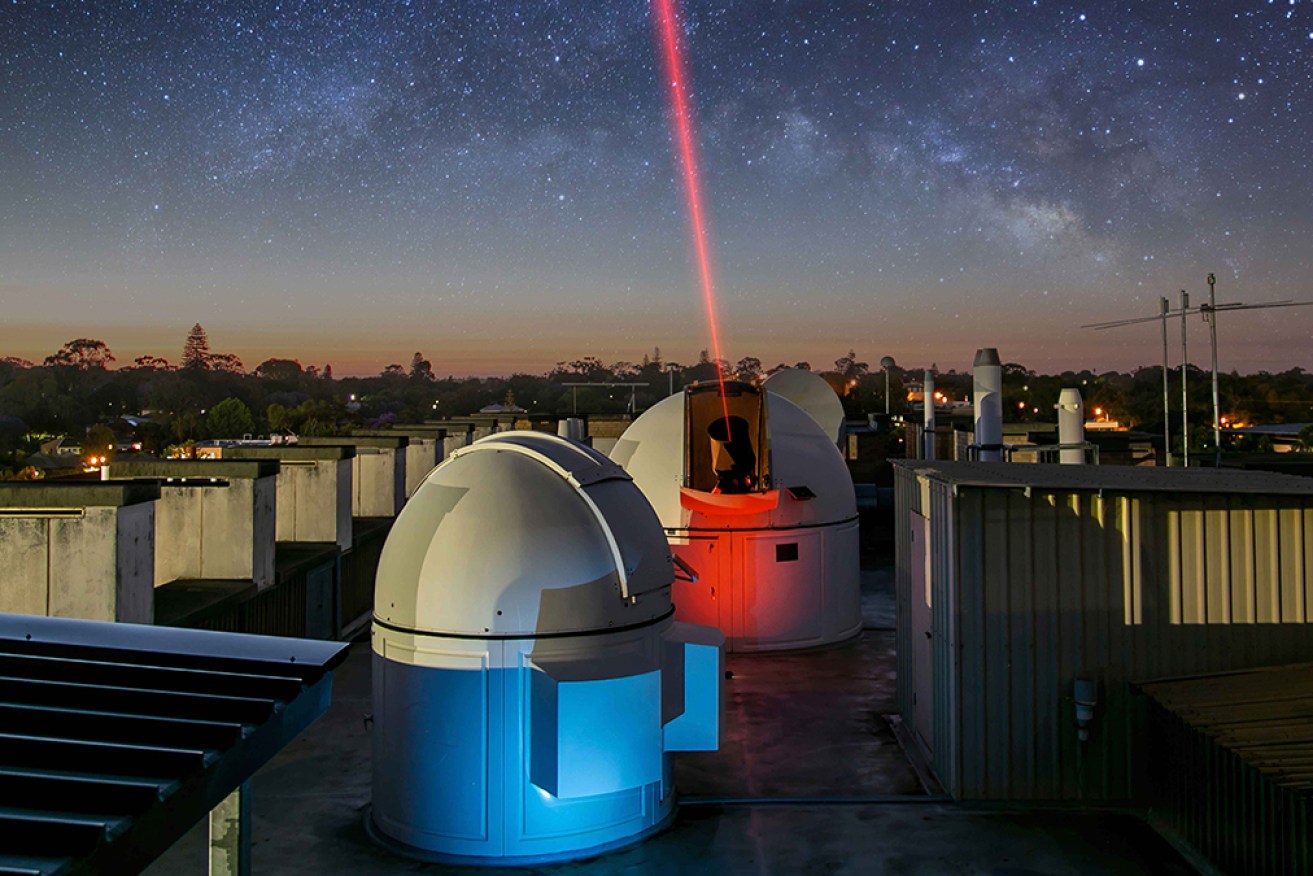Australian ‘super-fast laser’ technology could connect to Moon mission

The network will include ground stations at UWA and remote WA. Photo: AAP/International Centre for Radio Astronomy Research
The first human mission to the Moon in more than a half century could have an Australian connection, with researchers developing a new “super-fast laser” technology to communicate with spacecraft.
Scientists behind the $6.5 million TeraNet project say its optical technology will be 1000 times faster than the radio waves currently used to communicate in space.
The network, due for completion in 2026, will include two fixed ground stations at the University of Western Australia in Perth and the town of Mingenew, in WA’s mid-west, as well as a mobile station initially deployed at New Norcia.
One of the first commercial optical communications networks in Australia, its primary function will be to transfer data to and from satellites orbiting the planet.
But its capacity for high-speed communication in deep space could also be utilised during NASA’s Artemis II mission in 2024.
Tweet from @uwanews
The first crewed mission to the Moon since Apollo 17 in 1972, it will take the first woman and first person of colour to the lunar surface.
“It’s about supporting all these different customers and space missions in low Earth orbit,” TeraNet project leader Sascha Schediwy said.
“And then also being capable of advanced communications for things like NASA’s Artemis missions to the moon.”
Associate Professor Schediwy, from the Perth-based International Centre for Radio Astronomy Research, said space agencies needed communications stations worldwide to retain contact with missions as the Earth rotated.
WA’s geography and climate made it ideally suited to hosting the stations.
The high-resolution images taken by advanced satellites generated huge amounts of data, Professor Schediwy said, some of which had to be compressed or disposed of because it was too much to download.
It’s hoped the optical communications technology and supporting ground stations will allow the satellites to be used to their full capability.
The project has received a $4.4 million grant from the Australian Space Agency and is also funded by industry partners, the WA government and UWA.
Professor Schediwy said the funding would allow Australia to get ahead of other nations by developing its own optical communications infrastructure.
“We have this leapfrog opportunity to get there first and develop this sovereign capability,” he said.
“And we can reap the benefits of having Australian industries and Australian researchers involved from day one.”
-AAP








